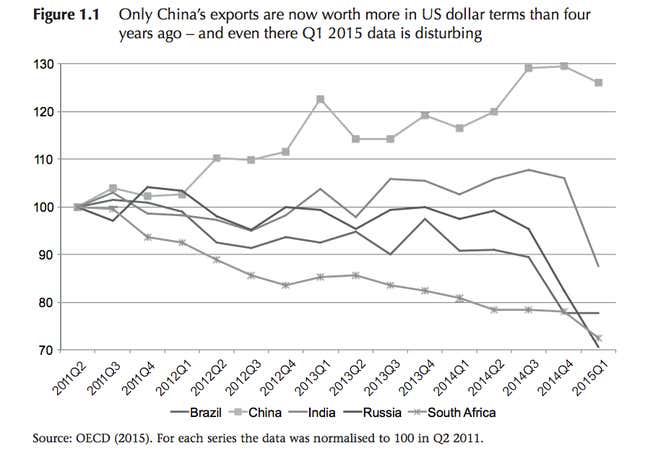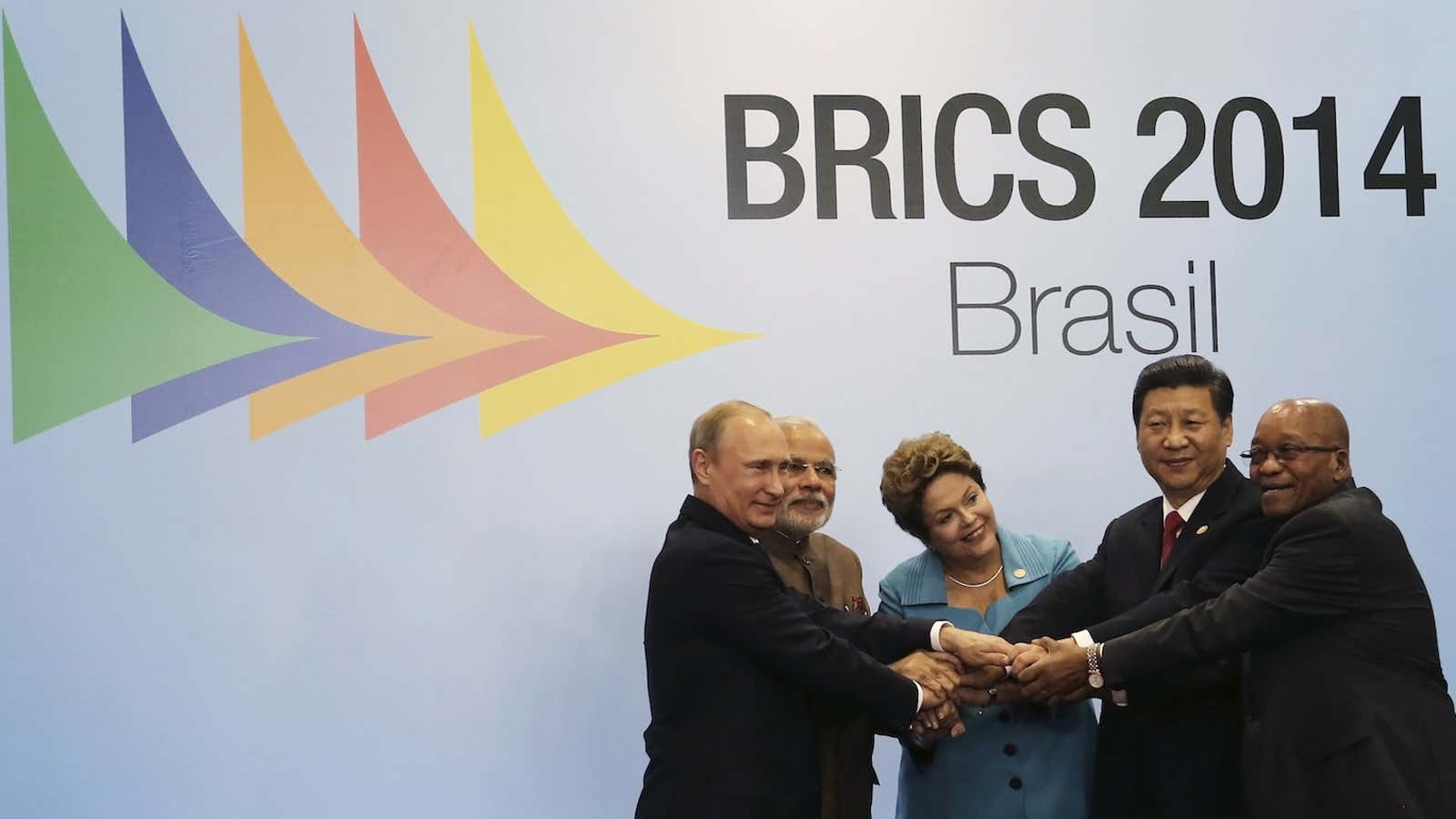Going by the broad smiles and the bonhomie among their leaders, you’d think that the BRICS nations—Brazil, Russia, India, China and South Africa—are one big happy family.
But behind the handshakes and the photo-ops is a troubling truth: The BRICS aren’t particularly great at doing business with each other.
A research report (pdf) by Global Trade Alert (GTA) points out that trade policies implemented by the BRICS are negatively impacting commercial ties between them.
GTA is part of the Centre for Economic Policy Research (CEPR), an independent academic and policy research think-tank based in London.
Commercial interests hit
“Notions of BRICS solidarity on protectionism should be set aside–almost a third of the times a BRICS commercial interest is harmed, it is due to actions taken by another member of the club,” the report says. Since 2008, each BRICS economy has been harmed at least 199 times by the other four nations. Russia was the least impacted by these measures by fellow BRICS nations, while China was the most.
The chart below shows the groups that did the most damage to the commercial interests of BRICS countries by implementing protectionist trade policies through tariffs, quotas, domestic subsidies or similar measures.
Trade distortions
The BRICS economies have also put in place measures to protect their interests in foreign trade. India and Russia have taken almost 450 harmful measures since the global economic crisis began in 2008, according to the GTA report, and only a fifth of these policies have been lifted across the BRICS.
According to GTA, which assessed trade strategies for the BRICS countries since 2008, only a fifth of the trade distortions negatively impacting these nations were implemented by leading industrialised countries. Instead, a third of the hits to the commercial interests of BRICS countries came from a fellow member.
This chart shows the total number of measures each of the BRICS has taken that discriminate against foreign commercial interests:
Meanwhile, the BRICS nations aren’t doing exceptionally well on exports. Even China—the only member with an export growth—saw a plateau during the end of 2014. The others have witnessed a steady drop in exports in the last four years. This is a cause for concern since exports are the backbone of developing countries, helping foreign exchange reserves and boosting local manufacturing.

So, as the five leaders meet in Russia, to work on fine-tuning the BRICS bank among other things, perhaps they should also consider co-ordinating better to facilitate more trade.




